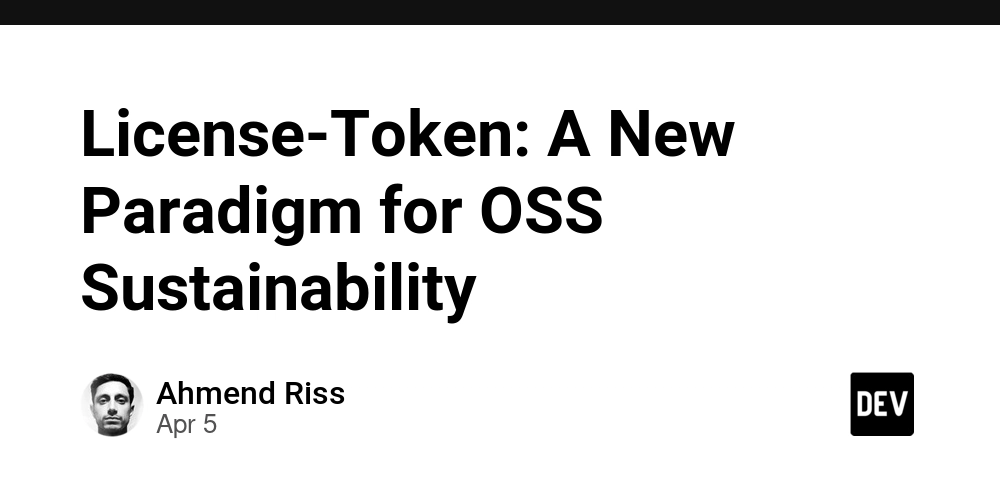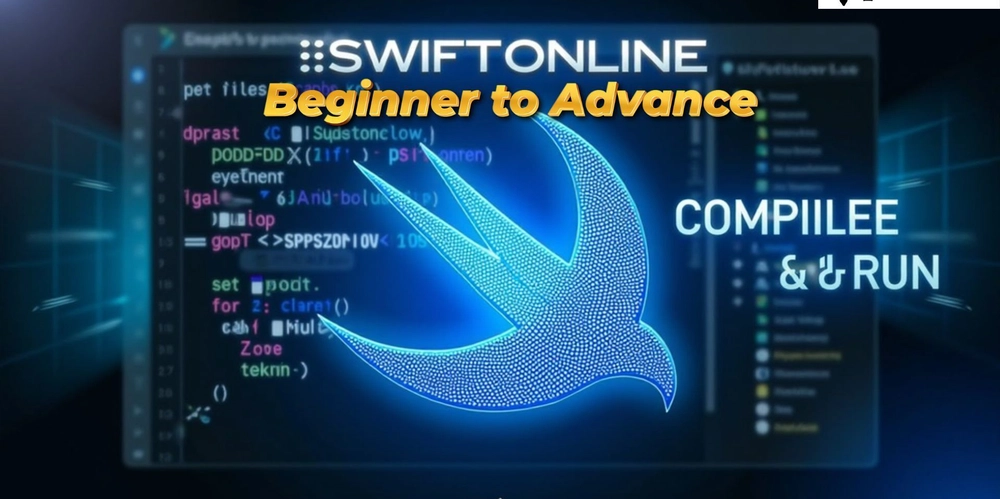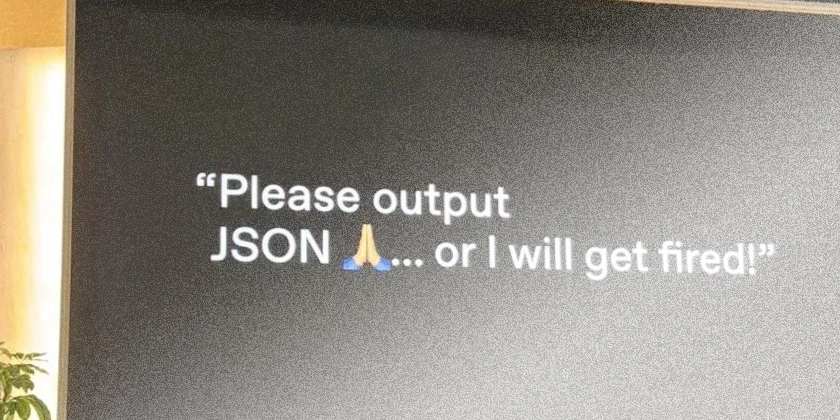License-Token: A New Paradigm for OSS Sustainability
Abstract In this post, we explore the innovative License-Token model—a new paradigm for funding open-source software (OSS) projects. By merging traditional licensing with digital asset technology, License-Token brings financial sustainability, decentralized governance, and enhanced contribution incentives to the OSS ecosystem. We dive into its background, core concepts, practical applications, challenges, and future outlook. This article is designed for both technical experts and enthusiasts seeking clarity on how tokenization can reshape open-source development. Introduction The open-source community has long been driven by ideals of collaboration and transparency. However, sustaining OSS projects financially remains a challenge. License-Token addresses this by integrating a digital asset approach with conventional open-source licensing. This model establishes a framework where tokenized licenses act as both a usage right and a currency. By doing so, it increases the funding options, formalizes contributions, and decentralizes project governance. Today, with the rise of blockchain technologies and smart contract platforms, innovative ideas like License-Token are not only possible but increasingly relevant. In this post, we explore how the License-Token model can bridge the gap between ideological open-source principles and financial sustainability. Background and Context The Traditional OSS Ecosystem Open-source software (OSS) has been the bedrock of modern technology. Platforms such as Open Source Guide and opensource.com provide extensive resources on open-source values and practices. Yet, the traditional funding model—often dependent on donations, grants, or sponsorships—has struggled to keep pace with the rapid technological advancements and increasing project scopes. Many OSS projects suffer from issues like: Limited funding: Insufficient compensation for maintainers and contributors. Decentralized governance: Challenges in establishing a consistent decision-making process. Legal ambiguities: Complexities in ensuring license compliance within evolving regulatory frameworks. Emergence of License-Token License-Token represents a transformational shift. It introduces a digital asset that functions as both a license for use and a form of remuneration for developers. Imagine a scenario where each contribution not only boosts your credibility but also earns you tokens that can be reinvested in further development. This model dramatically reshapes how OSS projects are financed, managed, and evolved. The integration of token economics with licensing has several historical antecedents in blockchain development. Websites like Cointelegraph detail advancements in digital asset compliance and blockchain integration that have paved the way for models like License-Token. Core Concepts and Features At its heart, License-Token aims to resolve sustainability challenges by extending the open-source license model through tokenization. Several core features emerge: Dual Nature of License-Token License as a Digital Asset: Acts both as a licensing tool and as a currency for funding development. Ensures that each piece of software has an associated token required for usage and redistribution. Incentive Alignment: Developers earn tokens through contributions, ensuring they are rewarded financially. Users pay tokens to use the software, reinforcing a sustainable financial model. Governance and Compliance Decentralized Governance: By distributing tokens to stakeholders, License-Token encourages a community-led decision-making process. This enables transparent governance where every token holder has a say in the project’s future. Regulatory Alignment: As governments worldwide evolve their regulation of digital assets, License-Token is designed to be compliant with international standards, making it a robust solution for open-source projects in regulated markets. For deeper insights into regulatory aspects, see resources like SEC Regulations. Key Features Table Below is a summary table that outlines the core features, benefits, and challenges of the License-Token model: Feature Description Benefits Challenges Dual Licensing & Currency Token functions as both a license and a digital asset for transactions Aligns incentives, ensures sustainable funding Requires technical integration and user adoption Decentralized Governance Community-based decision making enabled by token distribution Enhances transparency and fairness in governance Risk of fragmentation or power imbalances Smart Contracts Integration Utilizes blockchain smart contracts for automated compliance and payouts Improves efficiency and reduces administrative overhead Dependence on blockchain scalability and security Regulatory Compliance Designed to meet emerging global regulations on digital assets Provides legal clarit

Abstract
In this post, we explore the innovative License-Token model—a new paradigm for funding open-source software (OSS) projects. By merging traditional licensing with digital asset technology, License-Token brings financial sustainability, decentralized governance, and enhanced contribution incentives to the OSS ecosystem. We dive into its background, core concepts, practical applications, challenges, and future outlook. This article is designed for both technical experts and enthusiasts seeking clarity on how tokenization can reshape open-source development.
Introduction
The open-source community has long been driven by ideals of collaboration and transparency. However, sustaining OSS projects financially remains a challenge. License-Token addresses this by integrating a digital asset approach with conventional open-source licensing. This model establishes a framework where tokenized licenses act as both a usage right and a currency. By doing so, it increases the funding options, formalizes contributions, and decentralizes project governance.
Today, with the rise of blockchain technologies and smart contract platforms, innovative ideas like License-Token are not only possible but increasingly relevant. In this post, we explore how the License-Token model can bridge the gap between ideological open-source principles and financial sustainability.
Background and Context
The Traditional OSS Ecosystem
Open-source software (OSS) has been the bedrock of modern technology. Platforms such as Open Source Guide and opensource.com provide extensive resources on open-source values and practices. Yet, the traditional funding model—often dependent on donations, grants, or sponsorships—has struggled to keep pace with the rapid technological advancements and increasing project scopes.
Many OSS projects suffer from issues like:
- Limited funding: Insufficient compensation for maintainers and contributors.
- Decentralized governance: Challenges in establishing a consistent decision-making process.
- Legal ambiguities: Complexities in ensuring license compliance within evolving regulatory frameworks.
Emergence of License-Token
License-Token represents a transformational shift. It introduces a digital asset that functions as both a license for use and a form of remuneration for developers. Imagine a scenario where each contribution not only boosts your credibility but also earns you tokens that can be reinvested in further development. This model dramatically reshapes how OSS projects are financed, managed, and evolved.
The integration of token economics with licensing has several historical antecedents in blockchain development. Websites like Cointelegraph detail advancements in digital asset compliance and blockchain integration that have paved the way for models like License-Token.
Core Concepts and Features
At its heart, License-Token aims to resolve sustainability challenges by extending the open-source license model through tokenization. Several core features emerge:
Dual Nature of License-Token
-
License as a Digital Asset:
- Acts both as a licensing tool and as a currency for funding development.
- Ensures that each piece of software has an associated token required for usage and redistribution.
-
Incentive Alignment:
- Developers earn tokens through contributions, ensuring they are rewarded financially.
- Users pay tokens to use the software, reinforcing a sustainable financial model.
Governance and Compliance
Decentralized Governance:
By distributing tokens to stakeholders, License-Token encourages a community-led decision-making process. This enables transparent governance where every token holder has a say in the project’s future.Regulatory Alignment:
As governments worldwide evolve their regulation of digital assets, License-Token is designed to be compliant with international standards, making it a robust solution for open-source projects in regulated markets. For deeper insights into regulatory aspects, see resources like SEC Regulations.
Key Features Table
Below is a summary table that outlines the core features, benefits, and challenges of the License-Token model:
| Feature | Description | Benefits | Challenges |
|---|---|---|---|
| Dual Licensing & Currency | Token functions as both a license and a digital asset for transactions | Aligns incentives, ensures sustainable funding | Requires technical integration and user adoption |
| Decentralized Governance | Community-based decision making enabled by token distribution | Enhances transparency and fairness in governance | Risk of fragmentation or power imbalances |
| Smart Contracts Integration | Utilizes blockchain smart contracts for automated compliance and payouts | Improves efficiency and reduces administrative overhead | Dependence on blockchain scalability and security |
| Regulatory Compliance | Designed to meet emerging global regulations on digital assets | Provides legal clarity and protection for projects | Navigating different legal frameworks globally |
Additional Technical Concepts
- Smart Contracts: Self-executing contracts coded on a blockchain that enforce licensing terms automatically. Read more on Smart Contracts for Open Source Licensing.
- Tokenization of Assets: Converting a license into a digital token that represents monetary value as well. This emerging trend in asset tokenization makes financial transactions more seamless and traceable.
Applications and Use Cases
License-Token is not merely conceptual—it has practical applications across a range of scenarios. Let’s look at some real-world examples:
1. Funding Open-Source Projects with GitCoin and OpenCollective
Imagine an OSS project that traditionally relied on sporadic donations. With License-Token, contributions become tokenized. Developers receiving tokens from platforms such as GitCoin or managed through OpenCollective can reinvest those tokens to support further development. This creates a self-sustaining ecosystem where funding, development, and governance are linked seamlessly.
2. Enhancing Software Compliance and Legal Clarity
Integrating tokenized licenses ensures legal compliance without manual intervention. Projects can use digital tokens that are traceable on the blockchain, thereby protecting intellectual property while offering transparency. For insights on compliance, visit License-Token Streamlining Open Source Compliance.
3. Decentralized Governance Models in Practice
By allowing every token holder to vote on updates, priorities, and financial decisions, License-Token creates a decentralized governance model that can adapt quickly to community needs. In a blockchain-driven environment, such governance models are gaining traction. Open discussions on this topic can be seen in articles like Exploring the Decentralized Governance Model of Blur.
Use Cases Bullet List
- Sustainable Funding Models: Projects that struggle with traditional donations can benefit from tokenized revenue streams.
- Developer Compensation Systems: Ensure that contributors receive fair compensation through automated token distribution.
- Transparent License Compliance: Automate compliance and audit trails using smart contracts.
Challenges and Limitations
While License-Token offers a revolutionary approach, several challenges must be addressed:
Technical Overheads
- Integration Complexity: Embedding blockchain and digital token systems into existing OSS projects demands significant technical expertise.
- Scalability Concerns: Blockchain networks can face network congestion, especially when supporting large-scale projects.
Adoption and Market Acceptance
- Commercialization Risks: Transitioning to a token-based licensing system may face resistance from communities that prize non-commercial ethos.
- Regulatory Uncertainty: Though designed with compliance in mind, evolving global financial regulations could influence the adoption rate.
- User Education: Developers and end users require education on the mechanics of token systems, preventing misconceptions and ensuring smooth integration.
Challenges Table
Here is a brief table summarizing the challenges and limitations of the License-Token model:
| Limitation | Impact | Mitigation Strategy |
|---|---|---|
| Integration Complexity | Requires technical re-engineering of legacy systems | Develop comprehensive SDKs and integration tutorials |
| Scalability Issues | Potential network congestion and high transaction fees | Utilize Layer 2 scaling solutions and optimized smart contracts |
| Market Resistance | May contradict traditional OSS ethics and funding models | Educate communities, emphasize decentralized governance benefits |
| Regulatory Uncertainty | Legal complexities across jurisdictions | Collaborate with legal experts to ensure compliance |
Future Outlook and Innovations
As blockchain technology matures, the License-Token model is poised to play a transformative role in OSS sustainability. Here are some trends and potential innovations:
Increasing Blockchain Integration
With advancements in blockchain scalability solutions such as Layer 2 protocols and cross-chain interoperability, the technical challenges of integration will diminish. This progress is likely to open the door for further experimentation in tokenized licensing and automated governance. Resources like The Future of Open Source with Blockchain Integration provide comprehensive insights.
Enhanced Community Governance
As decentralized governance models evolve, we expect to see more granular control over project direction. Token-holders could potentially vote on features, bug fixes, and even on distribution of funds, leading to a community-driven future for OSS projects. Articles such as Empowering Open Source Through Funding Workshops discuss innovative governance paradigms that can be aligned with License-Token principles.
Regulatory Harmonization
Global regulatory bodies are increasingly focusing on digital assets. As laws become more standardized, License-Token's approach will benefit from increased legal clarity. This regulatory evolution will likely encourage more projects to adopt tokenized licensing, bridging the gap between traditional OSS models and modern financial systems.
Emerging Use Cases and Partnerships
We can expect more strategic partnerships among blockchain innovators and OSS communities. For example:
- Integration with Established Platforms: Major industry leaders may incorporate License-Token models within their OSS ecosystems.
- New Economic Models: Tokenized contributions could lead to innovative revenue-sharing models, fostering a robust ecosystem of support and sustainability.
Innovative Projects on the Horizon
- Arbitrum and Enterprise Solutions: Projects exploring interoperability across chains (e.g., Arbitrum and Cross-Chain Liquidity) could find a natural synergy with License-Token.
- Smart Contract Auditing and Compliance: There is growing interest in robust smart contract audits that ensure both compliance and transparency.
Summary
License-Token is a groundbreaking model that merges open-source licensing with blockchain-based financial incentives. By treating licenses as digital tokens, the model not only ensures compliance but also creates a sustainable economic ecosystem for OSS. Key elements include:
- A dual licensing and currency mechanism that rewards contributors and funds further development.
- Decentralized governance that involves the community in every major decision, promoting transparency and teamwork.
- Smart contract integrations that automate compliance, reduce overhead, and ensure secure transactions.
Although the model faces challenges such as technical integration complexities, scalability concerns, adoption resistance, and regulatory uncertainties, its potential to redefine OSS sustainability is immense. With ongoing innovations in blockchain technology and increased regulatory clarity, License-Token may soon become a mainstream funding and governance mechanism for open-source projects.
For more detailed exploration on tokenizing open source licenses, you can refer to the original article on License-Token: A New Paradigm for OSS Sustainability. Additional authoritative insights on blockchain and open source licensing can be found on platforms like Cointelegraph and Open Source Guide.
Additional Resources
- OpenCollective: Visit OpenCollective for insights on OSS funding.
- GitCoin: Explore blockchain-based funding for developers at GitCoin.
- Smart Contract Implementation: Learn more about Smart Contracts for Open Source Licensing.
Developer Insights from Dev.to
For further reading on funding and licensing models, check out the following articles from Dev.to:
- Exploring GitHub Sponsors: Empowering Open Source Sustainability for Future Innovation
- Navigating the Maze of Open Source Funding Best Practices for Success
- Tesla and Open Source Licensing: Elon Musk’s Vision—A New Era in Innovation
Concluding Thoughts
License-Token represents a pivotal evolution in the realm of open-source funding. By marrying the ideals of OSS with the financial efficiencies of blockchain technology, this model not only innovates how projects are funded but also how communities are governed. The future of sustainable OSS lies in innovative solutions that treat intellectual property and developer contribution as valuable digital assets.
As this paradigm continues to evolve, developers, organizations, and regulators alike will benefit from exploring and adopting these transformative ideas. Whether you are a maintainer struggling for funding, or a sponsor seeking transparency and accountability, License-Token offers a promising roadmap to a more sustainable, technologically advanced future for open-source software.
The integration of digital asset models into software licensing marks an exciting frontier in technology, where every contribution carries not only excellence but also tangible financial value. Embracing such innovations can lead to a future where the open-source community thrives exponentially and sustainably.
Happy coding, and may your contributions always be rewarded with tokens of innovation!











































































































































































![[The AI Show Episode 142]: ChatGPT’s New Image Generator, Studio Ghibli Craze and Backlash, Gemini 2.5, OpenAI Academy, 4o Updates, Vibe Marketing & xAI Acquires X](https://www.marketingaiinstitute.com/hubfs/ep%20142%20cover.png)




























































































































![[DEALS] The Premium Learn to Code Certification Bundle (97% off) & Other Deals Up To 98% Off – Offers End Soon!](https://www.javacodegeeks.com/wp-content/uploads/2012/12/jcg-logo.jpg)


![From drop-out to software architect with Jason Lengstorf [Podcast #167]](https://cdn.hashnode.com/res/hashnode/image/upload/v1743796461357/f3d19cd7-e6f5-4d7c-8bfc-eb974bc8da68.png?#)








































































































.png?#)

































_Christophe_Coat_Alamy.jpg?#)
 (1).webp?#)





































































































![Apple Considers Delaying Smart Home Hub Until 2026 [Gurman]](https://www.iclarified.com/images/news/96946/96946/96946-640.jpg)
![iPhone 17 Pro Won't Feature Two-Toned Back [Gurman]](https://www.iclarified.com/images/news/96944/96944/96944-640.jpg)
![Tariffs Threaten Apple's $999 iPhone Price Point in the U.S. [Gurman]](https://www.iclarified.com/images/news/96943/96943/96943-640.jpg)




































































































































